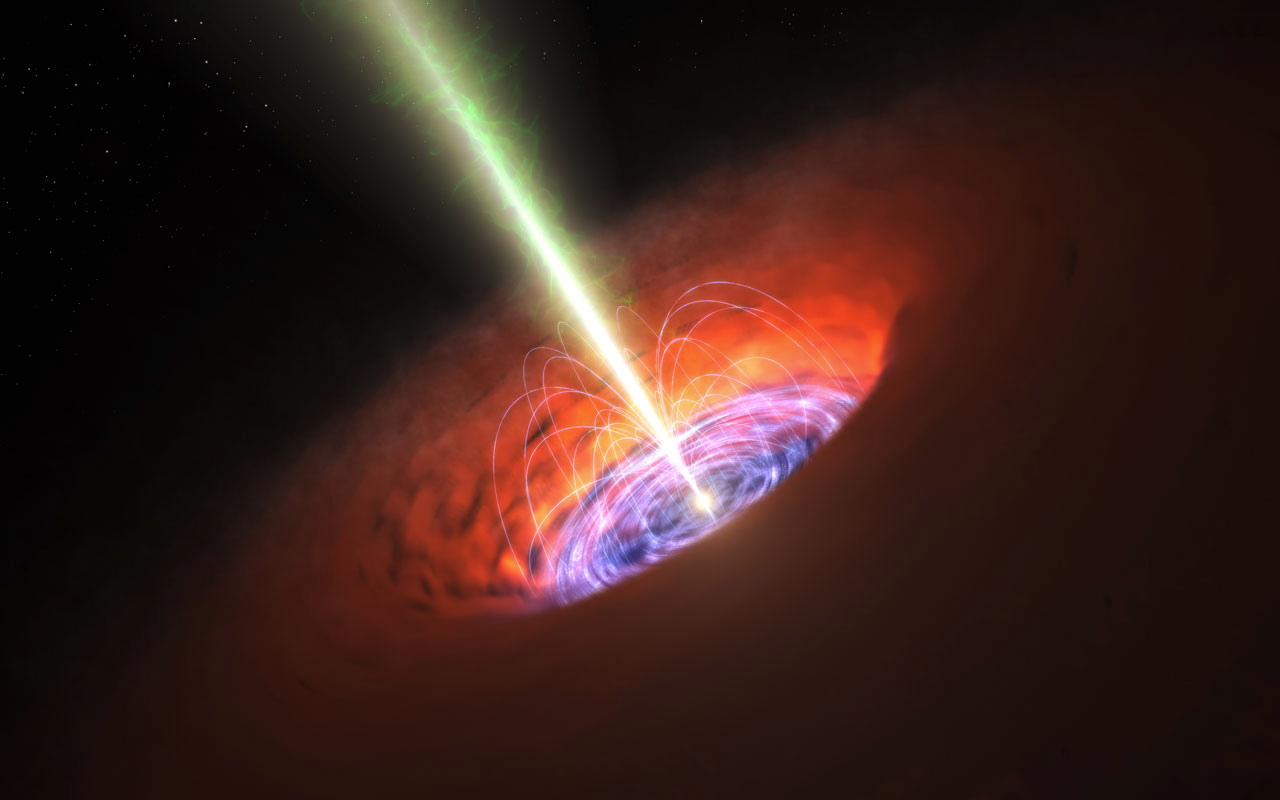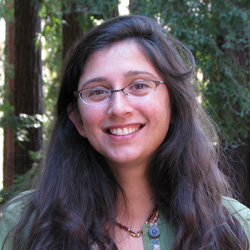Stephen Hawking: Black Holes Have 'Hair'

Black holes may sport a luxurious head of "hair" made up of ghostly, zero-energy particles, says a new hypothesis proposed by Stephen Hawking and other physicists.
The new paper, which was published online Jan. 5 in the preprint journal arXiv, proposes that at least some of the information devoured by a black hole is stored in these electric hairs.
Still, the new proposal doesn't prove that all the information that enters a black hole is preserved.
"The million dollar question is whether all the information is stored in this way, and we have made no claims about that," said study author Andrew Strominger, a physicist at Harvard University in Massachusetts. "It seems unlikely that the kind of hair that we described is rich enough to store all the information."
Black holes
According to Einstein's theory of general relativity, black holes are extremely dense celestial objects that warp space-time so strongly that no light or matter can escape their clutches. Some primordial black holes formed soon after the Big Bang and may be the size of a single atom yet as massive as a mountain, according to NASA. Others form as gigantic stars collapse in on themselves, while supermassive black holes lie at the hearts of almost all galaxies. [8 Ways You Can See Einstein's Theory of Relativity in Real Life]
In the 1960s, physicist John Wheeler and colleagues proposed that black holes "have no hair," a metaphor meaning that black holes were shorn of all complicated particularities. In Wheeler's formulation, all black holes were identical except for their spin, angular momentum and mass.
Then, in the 1970s, Stephen Hawking proposed the notion now called Hawking radiation. In this formulation, all black holes "leak" mass in the form of ghostly quantum particles that escape over time. Eventually, Hawking radiation causes black holes to evaporate altogether, leaving a single, unique vacuum. The vacuums left by these black holes, according to the original theory, would be identical, and thus incapable of storing information about the objects from which they were formed, Strominger said.
Breaking space news, the latest updates on rocket launches, skywatching events and more!
Since the Hawking radiation leaking from a black hole is completely random, that would mean black holes lose information over time, and there would be no way of knowing much about the celestial objects that formed the black holes. Yet that notion creates a paradox, because on the smallest scale, the laws of physics are completely reversible, meaning information that existed in the past should be theoretically recoverable. In recent years, Hawking has walked back the notion of information loss and conceded that black holes do store information after all.
Black hole "snowflakes"
In the past several years, Strominger has been dismantling some of these notions. First, he asked the question: What happens if you add a "soft" photon, or a particle of light with no energy, to the vacuum left behind after a black hole evaporates?
Though most people have never heard of soft photons, the particles are ubiquitous, Strominger said. (Other particles, called soft gravitons, are hypothetical quantum particles that transmit gravity. Though they have never been detected, most physicists believe these particles exist and are also incredibly abundant, Strominger said). [Beyond Higgs: 5 Other Particles That May Lurk in the Universe]
"Every collision at the Large Hadron Collider produces an infinite number of soft photons and soft gravitons," Strominger said. "We're swimming in them all the time."
After working through the equations, he — together with Hawking and Malcolm Perry, who are both physicists at the University of Cambridge in England — found that the black hole vacuum would have the same energy but different angular momentum after the addition of a soft photon. That meant the vacuum state of an evaporated black hole is a kind of celestial snowflake, with its individual properties dependent on its origin and history.
"Far from being a simple, vanilla object, it's like a large hard drive which can store essentially an infinite amount of information in the form of these zero-energy photons and gravitons," Strominger told Live Science.
The new work is an extension of a short paper Hawking put out in 2014, which argued that the event horizon, or the point of no return before an object would get swallowed into a black hole forever, may not be a fixed boundary. The new paper posits that hairs of soft photons and gravitons fringe a black holes' event horizon.
Information paradox stands
The problem is that this information is "incredibly scrambled up," so retrieving it from a black hole is akin to determining what someone tossed into a bonfire after it has burned up, Strominger said. Essentially, the new work is the black hole equivalent of using smoke and fire to figure out the identity of the original object that was burnt, he added.
"It's not a final answer to the information problem, but it does seem like a step in the right direction," said Aidan Chatwin-Davies, a physicist at the California Institute of Technology, who was not involved in the study.
While some of the information in a black hole may be contained in its hairy halo of soft photons and gravitons, not all of it necessarily resides there, he said.
"If anything, it puts forward some new ideas for us to think about which could prove very helpful in understanding black holes and how they encode information," Chatwin-Davies told Live Science.
Follow Tia Ghose on Twitter and Google+. Follow Live Science @livescience, Facebook & Google+. Original article on Live Science.

Tia is the assistant managing editor and was previously a senior writer for Live Science, a Space.com sister site. Her work has appeared in Scientific American, Wired.com and other outlets. She holds a master's degree in bioengineering from the University of Washington, a graduate certificate in science writing from UC Santa Cruz and a bachelor's degree in mechanical engineering from the University of Texas at Austin. Tia was part of a team at the Milwaukee Journal Sentinel that published the Empty Cradles series on preterm births, which won multiple awards, including the 2012 Casey Medal for Meritorious Journalism.

